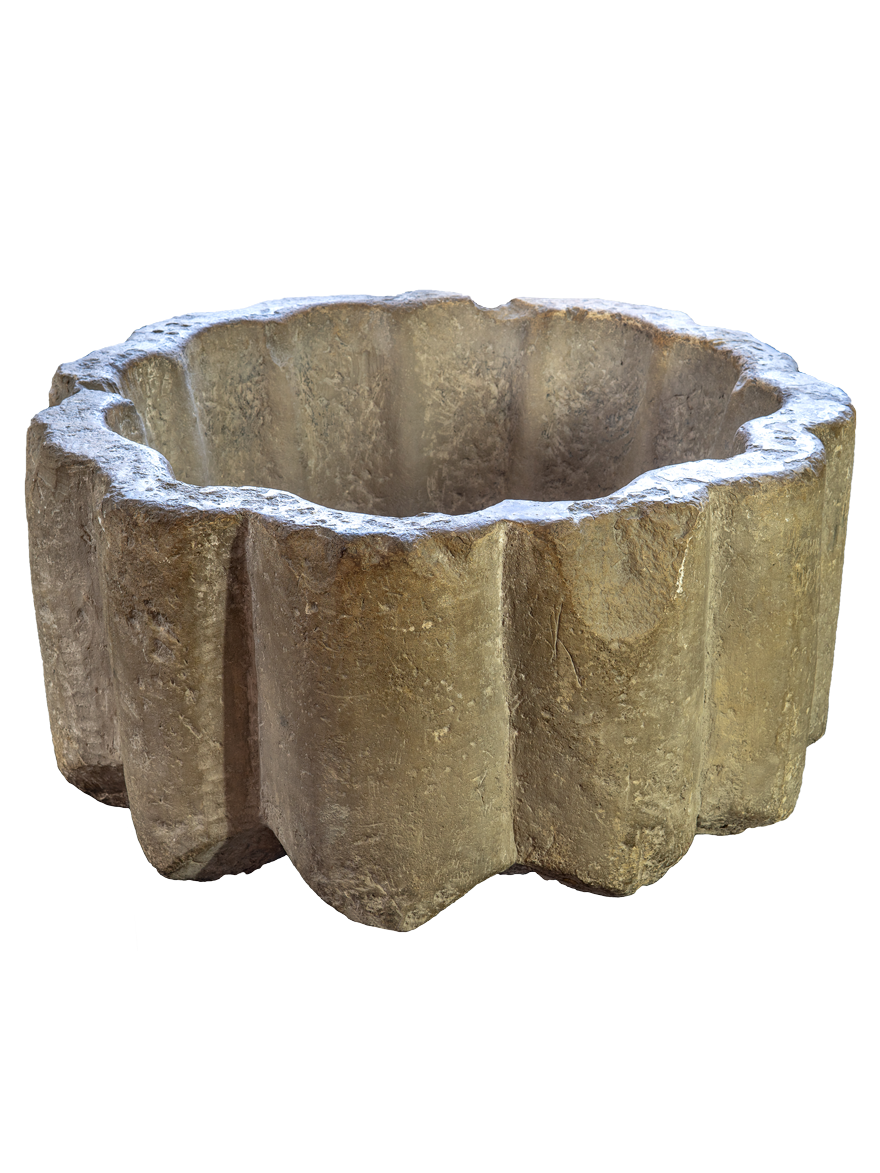Fountain’s basin

The fountain’s basin was found during archeological excavations of the “Red Chamber” – public baths of the XIV century on a hillfort Bolgar located on a place of an ancient capital of Volga Bulgaria.
The city Bolgar was a big medieval city. On the territory of the hillfort were found ruins of five public baths buildings. A public bath was meant to be a place mainly for taking rest and was a part and parcel of a city living. One of these baths of the XIV century was a “Red Chamber” that was standing on a square paved with tight-fitting slabs. Built of bricks and limestone it had a dressing-room, a bath itself and a housekeeping area. Walls were plastered and painted red, hence the name. The entrance led to a small dressing-room with wide benches along the wall. The bath was warmed with hot air that passed through special channels under the floor. In the center of the main hall the fountain was placed, along walls were basins made of limestone where hot and cold water was fed through ceramic pipes.
The fountain’s basin was found during archeological excavations of the “Red Chamber” – a public baths of the XIV century on a hillfort Bolgar located on a place of an ancient capital of Volga Bulgaria.
The city Bolgar was a big medieval city, economical, political and cultural center of Volga Bulgaria. It was prospering in the X century. Destroyed in 1236 by Mongols it was soon restored by them and in the end of the XIII century again reached its flourishing period. The city had a plumbing and plenty of fountains. A public bath was a part and parcel of a city living and was meant to be a place mainly for taking rest. On the territory of the hillfort were found ruins of five public baths buildings. One of these baths that existed from the middle of the XIV century till the 20-es of the XV century was a “Red Chamber” that was standing on a square paved with tight-fitting slabs.
Built of bricks and limestone it had a dressing-room, a bath itself and a housekeeping area. Walls were plastered in three layers: two white and one, the first, of pink waterproof plaster made of calcimine mixed with tiny pieces of crumbled brick and ceramics with a surface painted red. This red color gave the name to the bath. The entrance framed with a brick arc led to a small dressing-room with wide benches along the wall. The bath was warmed with a central furnace with hot air that passed through special channels under the floor. In the center of the main cross-shaped hall with four small halls-cabins in angles a fountain was placed, along walls were basins made of limestone where hot and cold water was fed through ceramic pipes. To small hollows in pipes over basins were put taps – soldered pipes made of a bent copper plate. One of these taps was found during archeological excavations.
Similar constructions of bathhouses are known in Central Asia, Transcaucasus, Byzantium and Crimea. An outstanding researcher Alexey Pavlovich Smirnov once said:
“Bolgar’s baths are connected to Crimea not only in architecture, but in some structural features. For instance pink plaster is known in Crimea where it was used even in earlier times, while Central Asia has none of it”.
